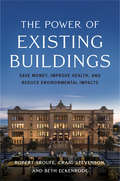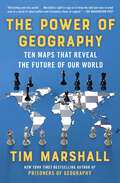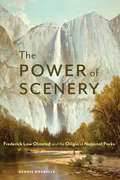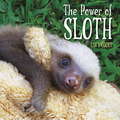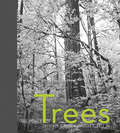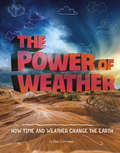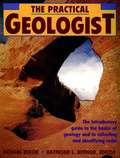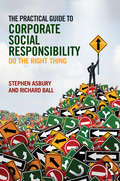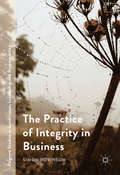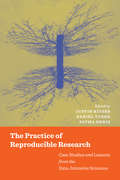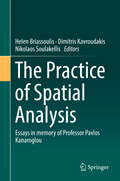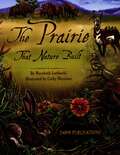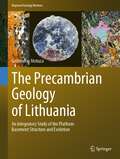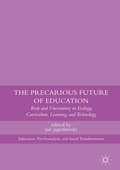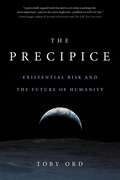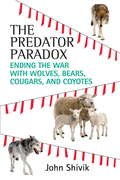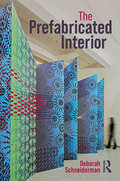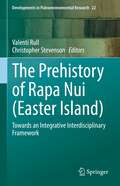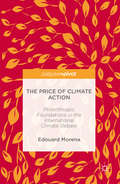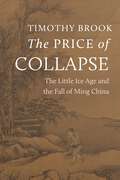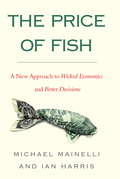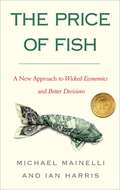- Table View
- List View
The Power of Existing Buildings: Save Money, Improve Health, and Reduce Environmental Impacts
by Robert Sroufe Jr Craig Stevenson Beth EckenrodeYour building has the potential to change the world. Existing buildings consume approximately 40 percent of the energy and emit nearly half of the carbon dioxide in the US each year. In recognition of the significant contribution of buildings to climate change, the idea of building green has become increasingly popular. But is it enough? If an energy-efficient building is new construction, it may take 10 to 80 years to overcome the climate change impacts of the building process. New buildings are sexy, but few realize the value in existing buildings and how easy it is to get to "zero energy&” or low-energy consumption through deep energy retrofits. Existing buildings can and should be retrofit to reduce environmental impacts that contribute to climate change, while improving human health and productivity for building occupants. In The Power of Existing Buildings, academic sustainability expert Robert Sroufe, and construction and building experts Craig Stevenson and Beth Eckenrode, explain how to realize the potential of existing buildings and make them perform like new. This step-by-step guide will help readers to: understand where to start a project; develop financial models and realize costs savings; assemble an expert team; and align goals with numerous sustainability programs. The Power of Existing Buildings will challenge you to rethink spaces where people work and play, while determining how existing buildings can save the world. The insights and practical experience of Sroufe, Stevenson, and Eckenrode, along with the project case study examples, provide new insights on investing in existing buildings for building owners, engineers, occupants, architects, and real estate and construction professionals. The Power of Existing Buildings helps decision-makers move beyond incremental changes to holistic, results-oriented solutions.
The Power of Geography: Ten Maps That Reveal the Future of Our World (Politics of Place #4)
by Tim MarshallFrom the author of the New York Times bestseller Prisoners of Geography, a fascinating, &“refreshing, and very useful&” (The Washington Post) follow-up that uses ten maps to explain the challenges to today&’s world powers and how they presage a volatile future.Tim Marshall&’s global bestseller Prisoners of Geography offered us a &“fresh way of looking at maps&” (The New York Times Book Review), showing how every nation&’s choices are limited by mountains, rivers, seas, and walls. Since then, the geography hasn&’t changed, but the world has. Now, in this &“wonderfully entertaining and lucid account, written with wit, pace, and clarity&” (Mirror, UK), Marshall takes us into ten regions set to shape global politics. Find out why US interest in the Middle East will wane; why Australia is now beginning an epic contest with China; how Turkey, Saudi Arabia, and the UK are cleverly positioning themselves for greater power; why Ethiopia can control Egypt; and why Europe&’s next refugee crisis looms closer than we think, as does a cutting-edge arms race to control space. Innovative, compelling, and delivered with Marshall&’s trademark wit and insight, this is &“an immersive blend of history, economics, and political analysis that puts geography at the center of human affairs&” (Publishers Weekly).
The Power of Scenery: Frederick Law Olmsted and the Origin of National Parks
by Dennis DrabelleWallace Stegner called national parks &“the best idea we ever had.&” As Americans celebrate the 150th anniversary of Yellowstone, the world&’s first national park, a question naturally arises: where did the idea for a national park originate? The answer starts with a look at pre-Yellowstone America. With nothing to put up against Europe&’s cultural pearls—its cathedrals, castles, and museums—Americans came to realize that their plentitude of natural wonders might compensate for the dearth of manmade attractions. That insight guided the great landscape architect Frederick Law Olmsted as he organized his thoughts on how to manage the wilderness park centered on Yosemite Valley, a state-owned predecessor to the national park model of Yellowstone. Haunting those thoughts were the cluttered and carnival-like banks of Niagara Falls, which served as an oft-cited example of what should not happen to a spectacular natural phenomenon. Olmsted saw city parks as vital to the pursuit of happiness and wanted them to be established for all to enjoy. When he wrote down his philosophy for managing Yosemite, a new and different kind of park, one that preserves a great natural site in the wilds, he had no idea that he was creating a visionary blueprint for national parks to come. Dennis Drabelle provides a history of the national park concept, adding to our understanding of American environmental thought and linking Olmsted with three of the country&’s national treasures. Published in time to celebrate the 150th anniversary of Yellowstone National Park on March 1, 2022, and the 200th birthday of Frederick Law Olmsted on April 26, 2022, The Power of Scenery tells the fascinating story of how the national park movement arose, evolved, and has spread around the world.
The Power of Sloth
by Lucy CookeThe Power of Sloth is Lucy Cooke's celebration of the sloth: the cutest, cuddliest, slowest creature on this planet. In the book she brings together some truly adorable pictures of baby sloths, literally by the bucketful. These delightful, funny pictures are accompanied by a simple text which tells you all about sloths and why we should protect them. We also discover all about the work of the Avarios sloth sanctuary, which, along with the ZSL EDGE programme to protect the pygmy sloth, receives some of the proceeds from this book. This book has been a huge success in the USA, where is was published under the title of The Little Book of Sloth, selling over 50,000 copies and making the New York Times best-seller list.
The Power of Trees
by Charles Katz Gretchen DailyIntimate in size yet quietly breathtaking in scope, this graceful gift book will forever change how you think, and how you feel, about trees. In poetically sparse scientific observations, renowned conservation biologist Gretchen Daily narrates the evolution, impact, and natural wonder of trees. Alongside photographs by Chuck Katz, the text and images form a quiet and moving meditation on The Power of Trees. Twenty-six duotone black and white photographs illustrate the development of trees: how trunks were formed, what tree rings tell us about human societies, and how trees define the future of humanity. Pictures of trees threading through the landscape - dotting mountainsides, braiding along the sides of glassine rivers - bear witness to the lyrical force and clarity of Daily's observations.Recreating the authors' hike together through the landscape of the Skagit River in Washington State, the balletic movement between Daily's commentary and Katz's vision reaches out to readers, inviting them to enjoy the landscape through a scientific understanding of trees. At once emotional and intellectual, The Power of Trees is the first collection of nature photographs that invites the reader to not only delight in the gorgeous play between light and shadow, but also the fascinating natural mechanisms that create such striking natural beauty.An ecologist by training, Gretchen Daily is an internationally acclaimed conservancy advocate and scholar. Her role as a National Trustee for The Nature Conservancy will feature prominently in the national marketing campaign to bridge the gap between scientific educators and the general nature reader.
The Power of Trees
by Charles Katz Gretchen DailyIntimate in size yet quietly breathtaking in scope, this graceful gift book will forever change how you think, and how you feel, about trees. In poetically sparse scientific observations, renowned conservation biologist Gretchen Daily narrates the evolution, impact, and natural wonder of trees. Alongside photographs by Chuck Katz, the text and images form a quiet and moving meditation on The Power of Trees. Twenty-six duotone black and white photographs illustrate the development of trees: how trunks were formed, what tree rings tell us about human societies, and how trees define the future of humanity. Pictures of trees threading through the landscape - dotting mountainsides, braiding along the sides of glassine rivers - bear witness to the lyrical force and clarity of Daily's observations.Recreating the authors' hike together through the landscape of the Skagit River in Washington State, the balletic movement between Daily's commentary and Katz's vision reaches out to readers, inviting them to enjoy the landscape through a scientific understanding of trees. At once emotional and intellectual, The Power of Trees is the first collection of nature photographs that invites the reader to not only delight in the gorgeous play between light and shadow, but also the fascinating natural mechanisms that create such striking natural beauty.An ecologist by training, Gretchen Daily is an internationally acclaimed conservancy advocate and scholar. Her role as a National Trustee for The Nature Conservancy will feature prominently in the national marketing campaign to bridge the gap between scientific educators and the general nature reader.
The Power of Trees
by Charles Katz Gretchen DailyIntimate in size yet quietly breathtaking in scope, this graceful gift book will forever change how you think, and how you feel, about trees. In poetically sparse scientific observations, renowned conservation biologist Gretchen Daily narrates the evolution, impact, and natural wonder of trees. Alongside photographs by Chuck Katz, the text and images form a quiet and moving meditation on The Power of Trees. Twenty-six duotone black and white photographs illustrate the development of trees: how trunks were formed, what tree rings tell us about human societies, and how trees define the future of humanity. Pictures of trees threading through the landscape - dotting mountainsides, braiding along the sides of glassine rivers - bear witness to the lyrical force and clarity of Daily's observations.Recreating the authors' hike together through the landscape of the Skagit River in Washington State, the balletic movement between Daily's commentary and Katz's vision reaches out to readers, inviting them to enjoy the landscape through a scientific understanding of trees. At once emotional and intellectual, The Power of Trees is the first collection of nature photographs that invites the reader to not only delight in the gorgeous play between light and shadow, but also the fascinating natural mechanisms that create such striking natural beauty.An ecologist by training, Gretchen Daily is an internationally acclaimed conservancy advocate and scholar. Her role as a National Trustee for The Nature Conservancy will feature prominently in the national marketing campaign to bridge the gap between scientific educators and the general nature reader.
The Power of Weather: How Time and Weather Change the Earth (Weather and Climate)
by Ellen LabrecqueFrom wind and rain to tornadoes and hurricanes, weather is a powerful force in our world. Discover how weather changes the world we live in and how scientists learn about its impact on our daily lives.
The Practical Geologist
by Dougal Dixon Raymond I. BernorFrom exploring the basic principles of geology to starting a rock and mineral collection, The Practical Geologist is the perfect introduction to the world of earth science. Beginning with a history of the earth's formation and development, this book explores the substances that compose the planet, movements within the earth, the surface effects of weather and water, and underground landscapes. It shows you how to search for, identify, and extract samples of various rocks and minerals, and for each rock and mineral type there is a brief mineralogy and explanation of its locations. There are also sections on mapping, preparing, and curating specimens, and geological sites on the six continents. Packed with more than 200 full-color illustrations, this comprehensive guide is the essential practical companion for natural science enthusiasts everywhere.
The Practical Guide to Corporate Social Responsibility: Do the Right Thing
by Stephen Asbury Richard BallCorporate social responsibility has gained substantial traction in recent decades but many still struggle with conveying the importance of integrating ethics and environmental and social values within the demands of a business world understandably concerned with making profit. First published in 2009 as ‘Do the Right Thing’, The Practical Guide to Corporate Social Responsibility guides you through the basics, teaching how to recognise CSR benefits and put principles into practice in a business-focussed way. This new edition helps readers get to grips with improving their organisation's environmental management, sustainability, health and safety and trading ethics with straightforward guidance and tips. A new ‘Do The Right Thing’ Model assists organisations with identifying risks and frames corporate social responsibility in a business context accessible to all. Features include: An updated Do the Right Thing Model aligned to the new ISO high level structure for management system standards 20 global case studies to demonstrate how the model can impact performance A corporate social responsibility policy template for your organisation’s use Helpful 'Test your thinking' exercises to check your understanding and stretch your working knowledge 100 practical actions for you to start implementing today This is an essential introduction to the complex areas of corporate social responsibility that affect health and safety practitioners, environmental managers, human resources personnel and those working with quality and business assurance. It will also be critical reading for those looking to understand how CSR fits into the new high level structure of ISO 9001, ISO 14001 and ISO 45001.
The Practice of Integrity in Business (Palgrave Studies in Governance, Leadership and Responsibility)
by Simon RobinsonThis book explores the role of integrity in business and discusses why all leaders seek to have it. The author argues that it is less about ‘having’ integrity as an attribute, and more about practising it. The Practice of Integrity in Business examines how taking responsibility for ideas, values and practices, as well as accountability and wider creative responsibility for sustaining business, all contribute to the perceived integrity of an organization or business leader. Providing methods through which integrity can be learned, the author demonstrates the importance of practice, learning, dialogue and developing a narrative in forming the basis of trust. The book offers a view of integrity in which ideas, values and practice come together to make business and social sense, and to form the basis of mutual challenge and creativity.
The Practice of Reproducible Research: Case Studies and Lessons from the Data-Intensive Sciences
by Justin KitzesThe Practice of Reproducible Research presents concrete examples of how researchers in the data-intensive sciences are working to improve the reproducibility of their research projects. In each of the thirty-one case studies in this volume, the author or team describes the workflow that they used to complete a real-world research project. Authors highlight how they utilized particular tools, ideas, and practices to support reproducibility, emphasizing the very practical how, rather than the why or what, of conducting reproducible research. Part 1 provides an accessible introduction to reproducible research, a basic reproducible research project template, and a synthesis of lessons learned from across the thirty-one case studies. Parts 2 and 3 focus on the case studies themselves. The Practice of Reproducible Research is an invaluable resource for students and researchers who wish to better understand the practice of data-intensive sciences and learn how to make their own research more reproducible.
The Practice of Spatial Analysis: Essays in memory of Professor Pavlos Kanaroglou
by Helen Briassoulis Dimitris Kavroudakis Nikolaos SoulakellisThis edited volume compiles a set of papers that present various applications of spatial analysis, both traditional and contemporary, on diverse subjects in a wide range of contexts. The volume is dedicated to the memory of the late Professor Pavlos Kanaroglou, McMaster University, Canada, who greatly contributed to scientific and applied research on spatial analysis. In his honor, the book offers a selection of various spatial analysis approaches to the study of contemporary urban transportation, land use, and air pollution issues. The first part of the book discusses selected general issues in spatial analysis; ontologies, agent-based modelling and accessibility analysis. The second part deals with urban transportation analysis and modelling issues; agent-based activity/travel microsimulation, bottleneck models, public transit use, freight transport and connected automated vehicles impact assessment. Part three focuses on integrated land use and transport analysis, discussing the land value impacts of public transport infrastructure, the role of transport provision on business evolution and commute distance considerations in urban relocation. The fourth part, on travel-related air pollution analysis, presents the development of a geo-information software for mapping Aerosol Optical Thickness in urban environments and the development of a neighborhood level, real time, internet-enabled, air pollution map in the Canadian urban context. This book will appeal to academics, researchers, graduate students, consultants, and practitioners working on topics related to spatial analysis, land use and transport analysis, planning and decision making, and air pollution studies.
The Prairie that Nature Built
by Marybeth LorbieckiNature on the prairie, including both wildlife and wildfire, is a rich and closely knit ecosystem, as reflected in the interlocking verses of this simple story. Endnotes present facts, activities, related games, and resources
The Precambrian Geology of Lithuania: An Integratory Study of the Platform Basement Structure and Evolution (Regional Geology Reviews)
by Gediminas MotuzaThis book shows the results of structural, compositional and evolutionary investigations of the Precambrian crust of the East European Craton in Lithuania and adjacent areas. This work contributes to the recognition of the platform basement, which remains weekly investigated worldwide, despite it encompassing the surfaces of cratons. It presents a methodological example of systematic studies of the covered platform basement, integrating petrological, geochemical, isotopic, and geophysical methods, as well as geological mapping, in order to present comprehensive geological picture of the subject matter. In a systematic and summarized form, factual data and intellectual material acquired by researchers are combined. Important papers and industrial reports (also written in Russian and Lithuanian) make this information accessible for both local and international scientists and practitioners and stimulate the advertising, application, and augmentation of this knowledge
The Precarious Future of Education: Risk and Uncertainty in Ecology, Curriculum, Learning, and Technology (Education, Psychoanalysis, and Social Transformation)
by Jan JagodzinskiThis volume examines the challenges weighing on the future of education in the face of globalization in the twenty-first century. Bringing together eleven authors who explore the paradox of an “after” to the future of education, each chapter in this book targets three important areas: ecology as understood in the broader framework of globalization and pedagogy; curriculum concerns which impact learning; and the pervasiveness of technology in education today.
The Precipice: Existential Risk and the Future of Humanity
by Toby OrdThis urgent and eye-opening book makes the case that protecting humanity's future is the central challenge of our time. If all goes well, human history is just beginning. Our species could survive for billions of years - enough time to end disease, poverty, and injustice, and to flourish in ways unimaginable today. But this vast future is at risk. With the advent of nuclear weapons, humanity entered a new age, where we face existential catastrophes - those from which we could never come back. Since then, these dangers have only multiplied, from climate change to engineered pathogens and artificial intelligence. If we do not act fast to reach a place of safety, it will soon be too late. Drawing on over a decade of research, The Precipice explores the cutting-edge science behind the risks we face. It puts them in the context of the greater story of humanity: showing how ending these risks is among the most pressing moral issues of our time. And it points the way forward, to the actions and strategies that can safeguard humanity. An Oxford philosopher committed to putting ideas into action, Toby Ord has advised the US National Intelligence Council, the UK Prime Minister's Office, and the World Bank on the biggest questions facing humanity. In The Precipice, he offers a startling reassessment of human history, the future we are failing to protect, and the steps we must take to ensure that our generation is not the last.
The Predator Paradox
by John ShivikAn expert in wildlife management tells the stories of those who are finding new ways for humans and mammalian predators to coexist. Stories of backyard bears and cat-eating coyotes are becoming increasingly common--even for people living in non-rural areas. Farmers anxious to protect their sheep from wolves aren't the only ones concerned: suburbanites and city dwellers are also having more unwanted run-ins with mammalian predators. And that might not be a bad thing. After all, our government has been at war with wildlife since 1914, and the death toll has been tremendous: federal agents kill a combined ninety thousand wolves, bears, coyotes, and cougars every year, often with dubious biological effectiveness. Only recently have these species begun to recover. Given improved scientific understanding and methods, can we continue to slow the slaughter and allow populations of mammalian predators to resume their positions as keystone species? As carnivore populations increase, however, their proximity to people, pets, and livestock leads to more conflict, and we are once again left to negotiate the uneasy terrain between elimination and conservation. In The Predator Paradox, veteran wildlife management expert John Shivik argues that we can end the war while still preserving and protecting these key species as fundamental components of healthy ecosystems. By reducing almost sole reliance on broad scale "death from above" tactics and by incorporating nonlethal approaches to managing wildlife--from electrified flagging to motion-sensor lights--we can dismantle the paradox, have both people and predators on the landscape, and ensure the long-term survival of both. As the boundary between human and animal habitat blurs, preventing human-wildlife conflict depends as much on changing animal behavior as on changing our own perceptions, attitudes, and actions. To that end, Shivik focuses on the facts, mollifies fears, and presents a variety of tools and tactics for consideration. Blending the science of the wild with entertaining and dramatic storytelling, Shivik's clear-eyed pragmatism allows him to appeal to both sides of the debate, while arguing for the possibility of coexistence: between ranchers and environmentalists, wildlife managers and animal-welfare activists, and humans and animals.
The Prefabricated Interior
by Deborah SchneidermanThough much attention has been given to the prefabrication of architecture, there has been little discussion on the influence and importance of prefabrication within the interior environment.This book does just that, providing a comprehensive investigation into the prefab interior from the 19th century to the present and beyond. Each chapter focuses on a typology of the prefabricated interior, looking at the bathroom, kitchen, workspace, furniture, mobile interiors, the prefab house, textiles, wearables, and the digital realm of printed interiors. Taken as a group, these chapters and illustrations indicate that constructs of the interior have been pivotal in the generation of techniques and processes of prefabrication in architecture and the built environment. Chapters explore a diverse range of examples of innovative prefabricated elements and assemblages within interior environments, illustrating the inherent sustainability, accessibility, building efficiency, and affordability of prefabricated design.The culmination of a decade of research by the leading expert on the topic, this will be the go-to resource on prefabricated interiors and an important read for all students and researchers in interior design.
The Prehistory of Rapa Nui: Towards an Integrative Interdisciplinary Framework (Developments in Paleoenvironmental Research #22)
by Christopher M. Stevenson Valentí RullThis book addresses the main enigmas of Easter Island’s (Rapa Nui, in the Polynesian language) prehistory from the time of initial settlement to European contact with a multidisciplinary perspective. The main topics include: (i) the time of first settlement and the origin of the first settlers; (ii) the main features of prehistoric Rapanui culture and their changes; (iii) the deforestation of the island and its timing and causes; (iv) the extinction of the indigenous biota, (v) the occurrence of climatic shifts and their potential effects on socioecological trends; (vi) the evidence for a cultural and demographic collapse before European contact; and (vii) the influence of Europeans on prehistoric Rapanui society. The book is subdivided into thematic sections and each chapter is written by renowned specialists in disciplines such as archaeology, anthropology, paleoecology, ethnography, linguistics, ethnobotany, phylogenetics/phylogeography and history. Contributors have been invited to provide an open and objective vision that includes as many views as possible on the topics considered. In this way, the readers may be able to compare different of points of view and make their own interpretations on each of the subjects considered. The book is intended for a wide audience including graduate students, advanced undergraduate students, university teachers and researchers interested in the subject. Given its multidisciplinary character and the topics included, the book is suitable for students and researchers from a wide range of disciplines and interests.
The Presidents and the Planet: Climate Change Science and Politics from Eisenhower to Bush
by Jay HakesThe Presidents and the Planet recounts the story of the world’s greatest environmental dilemma through the eyes of early climate change pioneers. It begins in the 1950s, when American scientists first warned about the risks of pollution altering the natural climate in dramatic ways, the national media began covering the matter, and experts first offered testimony to congressional committees on the topic. The story ends in the early 1990s, by which time global efforts to confront the challenge were advancing, while political turmoil had begun to undermine U.S. leadership’s ability to address current and future environmental threats.While some early proponents endorsing climate action are well known, many of the major players have gone largely unrecognized. The oceanographer Roger Revelle exerted influence on eight White Houses during his life and even one after his death, when his former student Al Gore assumed the office of vice president. William Nordhaus had already written seminal studies on climate change when President Jimmy Carter appointed him to the Council of Economic Advisors. Four decades later, the Yale professor won the Nobel Prize in economics for his work on the subject. John Chafee, a Republican from Rhode Island, chaired the Senate’s first committee on the problem and provided concrete solutions to face the dangers of a warming planet during the Reagan administration. The drama reached a full pitch during the George H. W. Bush years, as vocal advocates for climate action and staunch foes of government regulation wrestled over the direction of U.S. energy and environmental policy.To better trace the evolving climate debate in America, author Jay Hakes inspected the archives and writings of prominent scientists and the pivotal reports of the National Academy of Sciences, and traveled to presidential libraries to discover how commanders-in-chief and their science, economic, and political advisors addressed the issue. The Presidents and the Planet affords fresh perspectives that will alter the public’s understanding of when officials first grasped the dire consequences of climate change.
The Price of Climate Action
by Edouard MorenaThis book explores how a handful of liberal foundations contributed to establish and orientate the international climate regime. Looking back at the origins of international climate philanthropy and its evolution over the past three decades, the author examines the role of philanthropic foundations in the international climate debate. The research presented in this book shows that foundations, through their grant-making and convening activities, are at the heart of the climate debate. In fact, many credit them with having, through their activities prior to and at the COP, significantly contributed to laying the basis for the Paris Agreement in December 2015.
The Price of Collapse: The Little Ice Age and the Fall of Ming China
by Timothy BrookHow climate change ushered in the collapse of one of history&’s mighty empiresIn 1644, after close to three centuries of relative stability and prosperity, the Ming dynasty collapsed. Many historians attribute its demise to the Manchu invasion of China, but the truth is far more profound. The Price of Collapse provides an entirely new approach to the economic and social history of China, exploring how global climate crisis spelled the end of Ming rule.The mid-seventeenth century witnessed the deadliest phase of the Little Ice Age, when temperatures and rainfall plunged and world economies buckled. Timothy Brook draws on the history of grain prices to paint a gripping portrait of the final tumultuous years of a once-great dynasty. He explores how global trade networks that increasingly moved silver into China may have affected prices and describes the daily struggle to survive amid grain shortages and famine. By the early 1640s, as the subjects of the Ming found themselves caught in a deadly combination of cold and drought that defied all attempts to stave off disaster, the Ming price regime collapsed, and with it the Ming political regime.A masterful work of scholarship, The Price of Collapse reconstructs the experience of ordinary people under the immense pressure of unaffordable prices as their country slid from prosperity to calamity and shows how the market mediated the relationship between an empire and the climate that turned against it.
The Price of Fish
by Michael Mainelli Ian HarrisWinner of the 2012 Gold Medal IPPY Award for Finance/Investment/Economics. "Mainelli and Harris offer an original and insightful look at the big and important long-term issues facing society today. . . . Policy makers need to read this book."-Donald J. Smith, Boston University, author of BOND MATH: The Theory Behind the Formulas"In this thought-provoking and enlightening book, Mainelli and Harris highlight a point that economists too often forget: that economics is, at its heart, the study of human behavior, and that both commerce and its wicked sister, finance, mean nothing unless they are connected to people and society."-Bill Emmott, former editor of The Economist The price of fish cannot be right when we have over-fishing, hunger, and ruined seas. More than at any other time in our history, the world is faced with a series of vicious and apparently insurmountable difficulties, chief among them unstable financial markets, rapidly diminishing resources, and an ecosystem that is becoming dangerously volatile. In The Price of Fish, Michael Mainelli and Ian Harris examine in a unique way these intractable and wicked problems-sustainability, global warming, over-fishing, overpopulation, the pensions crisis-and suggest that it is not that these problems are too complex to solve, but that our way of reading them is too simple. Too simple and often wrong. Using models developed by quantum physicists, the authors show a way to making better decisions, which in turn, point to answers to our most pernicious problems. Now in paperback.Michael Mainelli and Ian Harris are co-founders of Z/Yen, a commercial think-tank in London, England.
The Price of Fish: A New Approach to Wicked Economics and Better Decisions
by Michael Mainelli Ian HarrisIn The Price of Fish, Michael Mainelli and Ian Harris examine in a unique way the world s most abiding and wicked problems sustainability, global warming, over-fishing, overpopulation, the pensions crisis; all of which are characterized by a set of messy, circular, aggressive and peculiarly long-term problems and go on to suggest that it is not the circumstances that are too complex, but our way of reading them that is too simple. Too simple and often wrong. The authors aim to blend four streams choice, economics, systems and evolution in a combination they believe is the key to making better decisions and, in turn, finding answers to the world's most pernicious problems.
